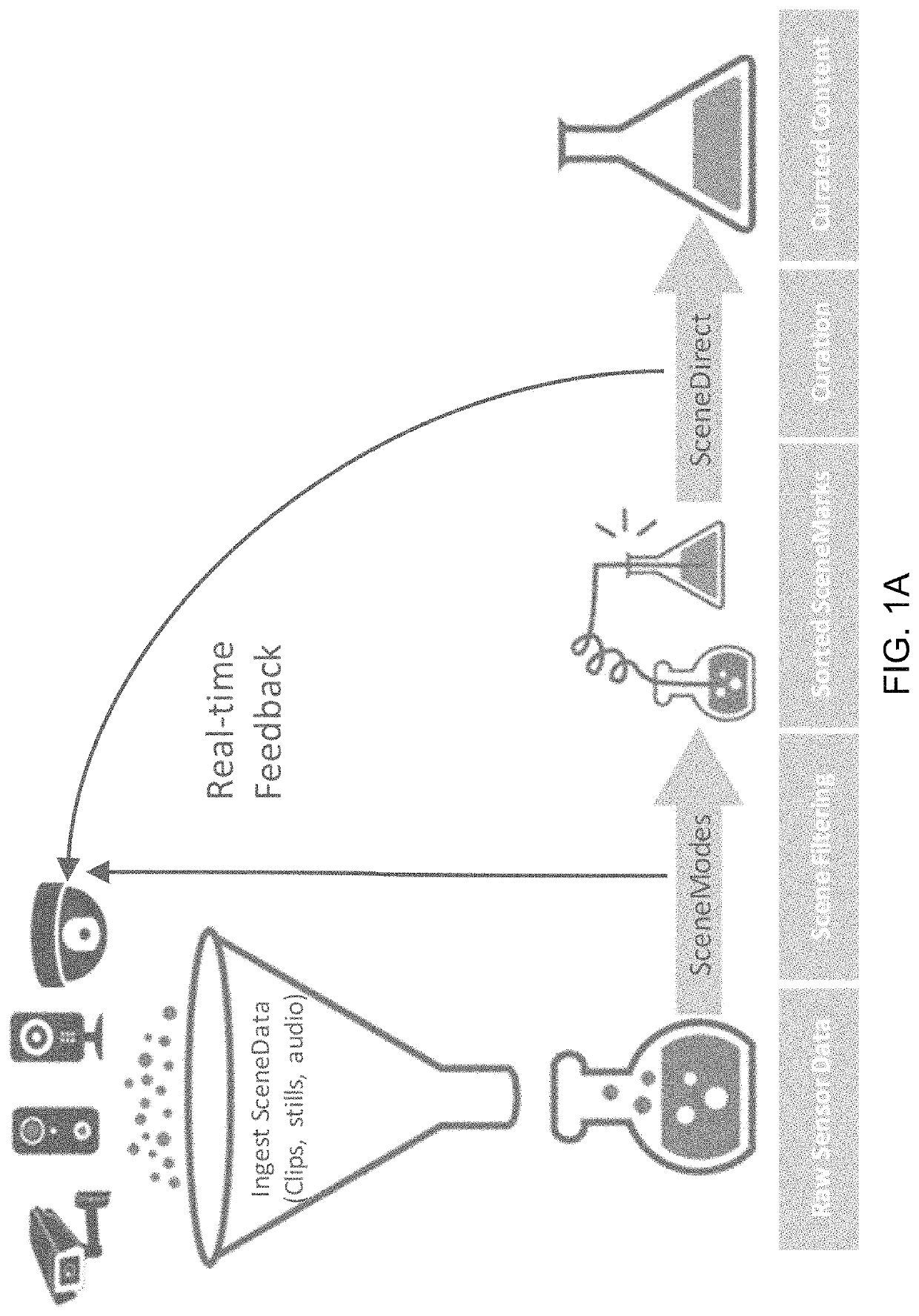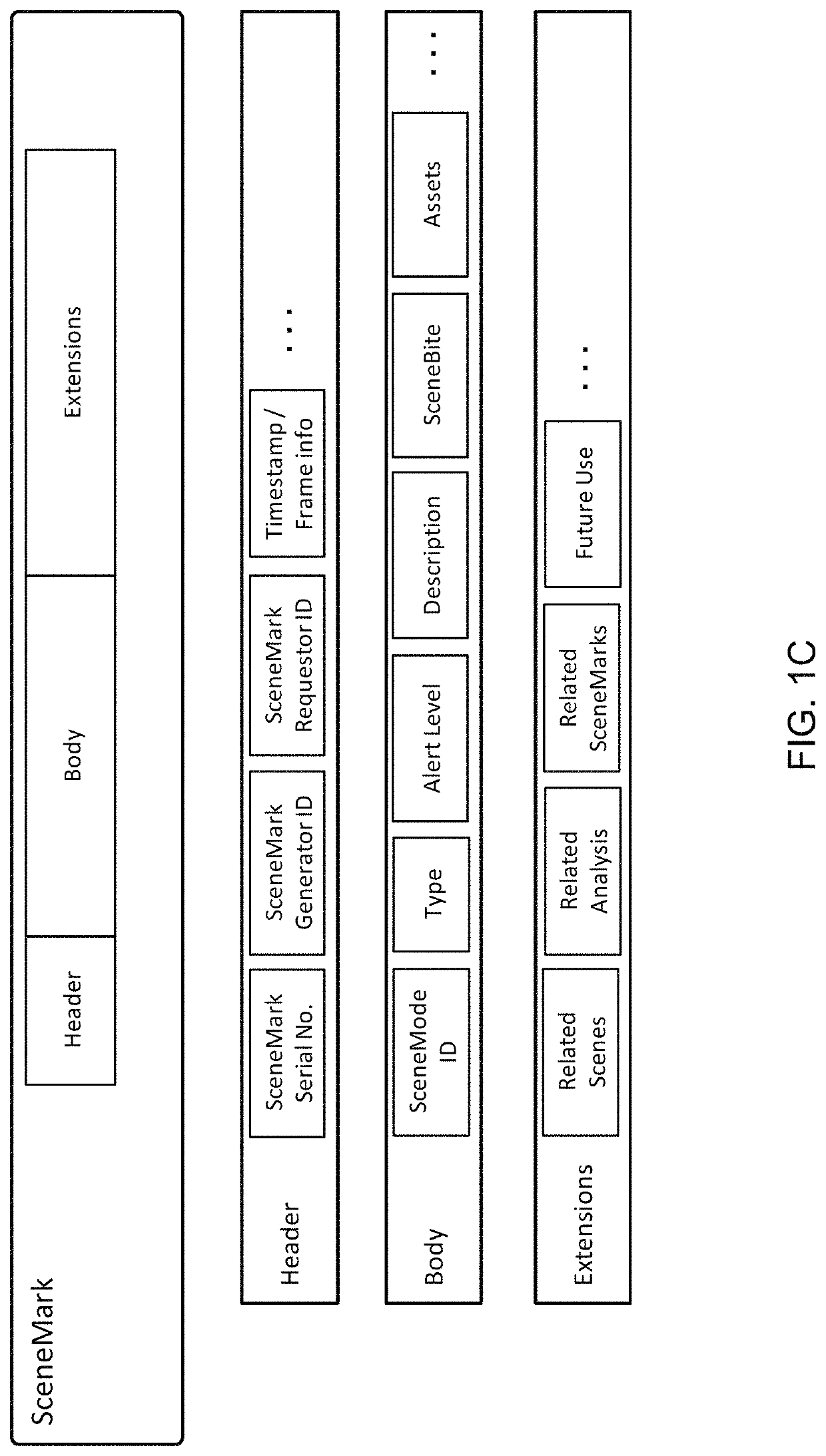Curation of custom workflows using multiple cameras
a workflow and camera technology, applied in multi-programming arrangements, television systems, instruments, etc., can solve problems such as waste of large amount of data storage, no mechanism to facilitate computing to easily interact, and most data from cameras not being processed in real tim
- Summary
- Abstract
- Description
- Claims
- Application Information
AI Technical Summary
Benefits of technology
Problems solved by technology
Method used
Image
Examples
Embodiment Construction
[0029]The figures and the following description relate to preferred embodiments by way of illustration only. It should be noted that from the following discussion, alternative embodiments of the structures and methods disclosed herein will be readily recognized as viable alternatives that may be employed without departing from the principles of what is claimed.
[0030]FIGS. 1A and 1B are high level introductory diagrams that show a custom workflow to generate useful data from raw sensor data, including image data. In FIG. 1A, in imaging applications, there are lots of different types of data that the cameras and other sensors capture. This raw sensor data, which may be captured 24×7 at video frame rates, typically is not all needed. Applications may need certain data only when certain important events occur. But how does an application know what events to look for or how to detect those events? In FIG. 1A, the custom workflow from raw sensor data to curated content detects the events ...
PUM
 Login to View More
Login to View More Abstract
Description
Claims
Application Information
 Login to View More
Login to View More - R&D
- Intellectual Property
- Life Sciences
- Materials
- Tech Scout
- Unparalleled Data Quality
- Higher Quality Content
- 60% Fewer Hallucinations
Browse by: Latest US Patents, China's latest patents, Technical Efficacy Thesaurus, Application Domain, Technology Topic, Popular Technical Reports.
© 2025 PatSnap. All rights reserved.Legal|Privacy policy|Modern Slavery Act Transparency Statement|Sitemap|About US| Contact US: help@patsnap.com



